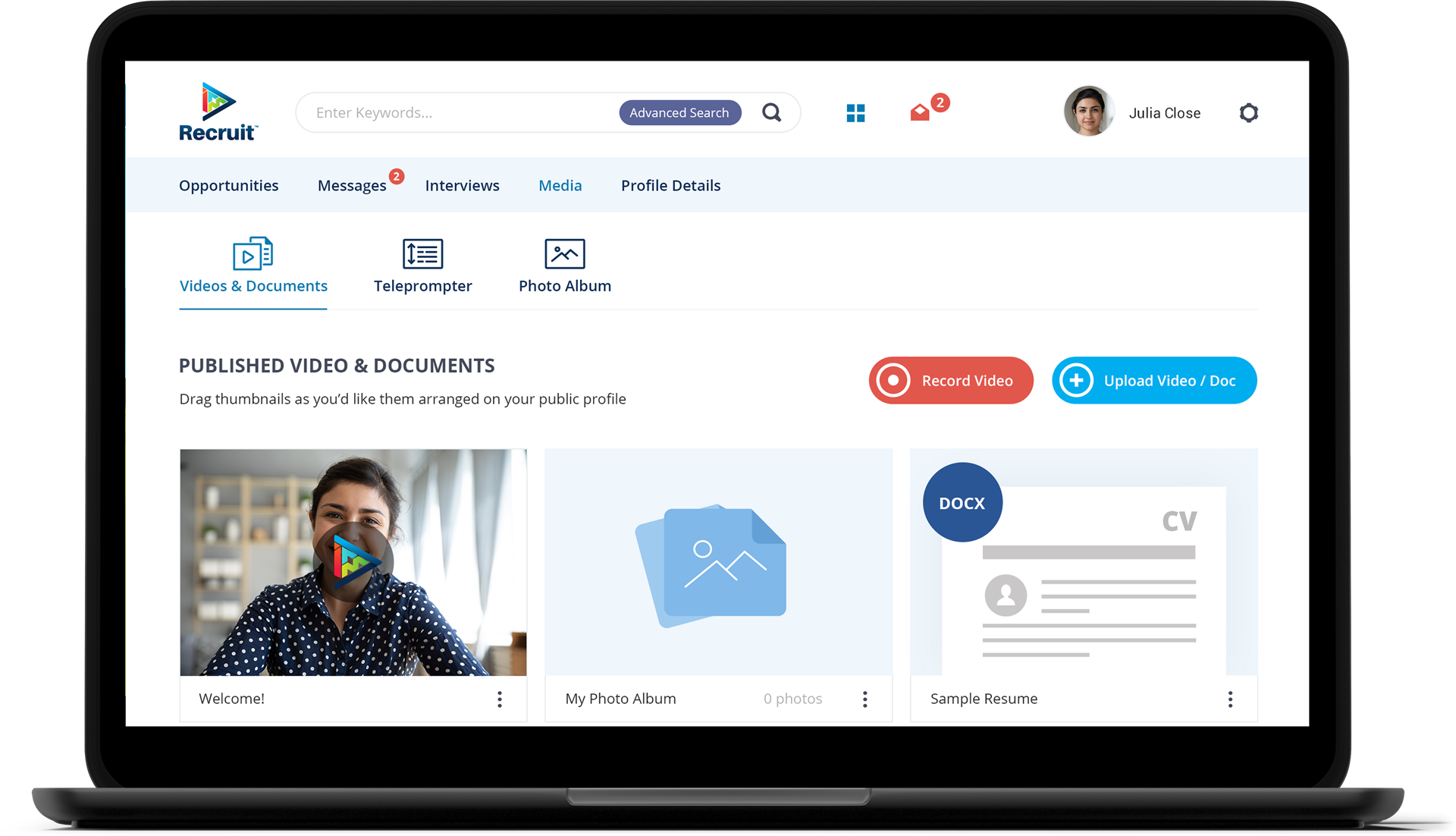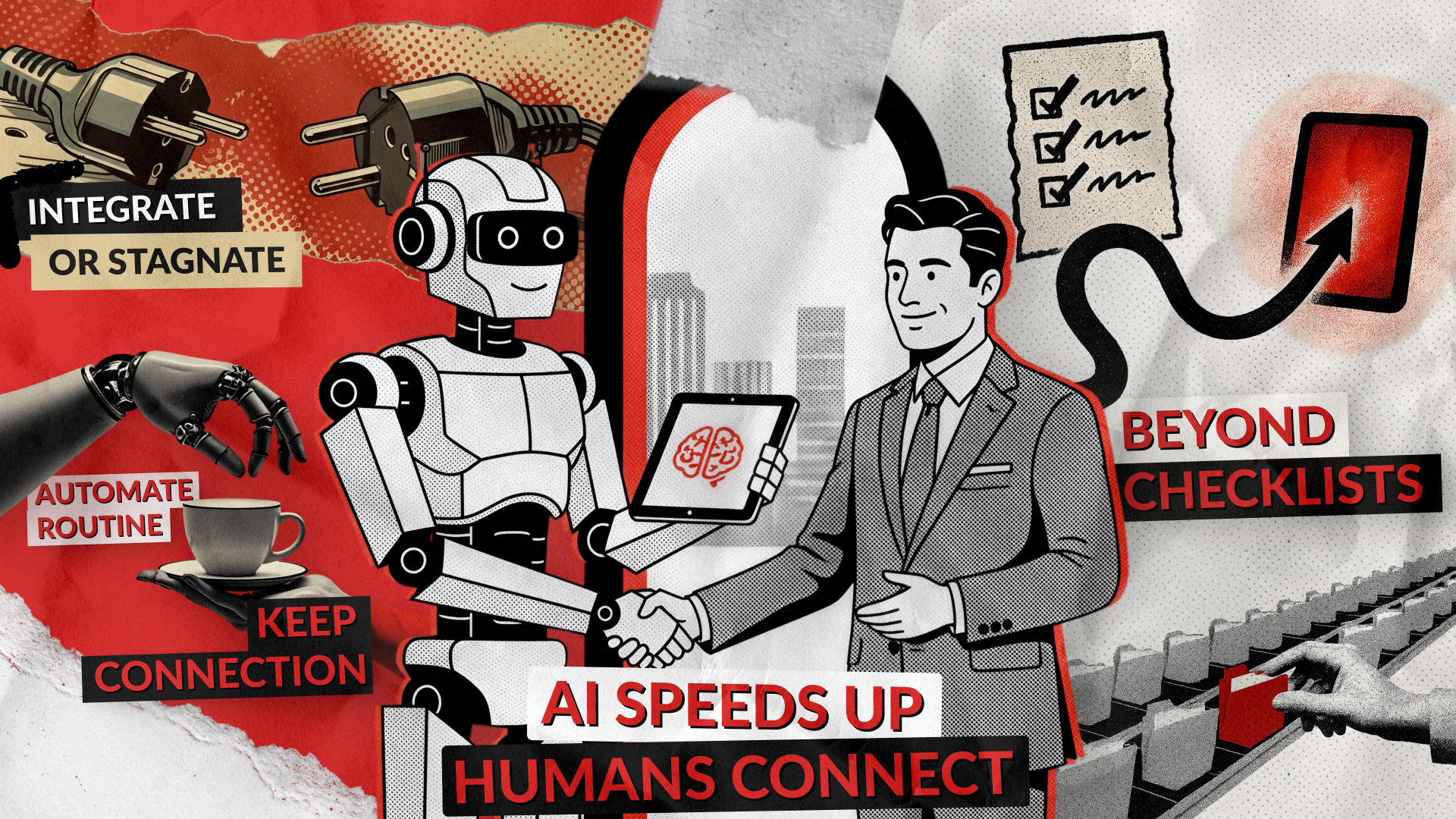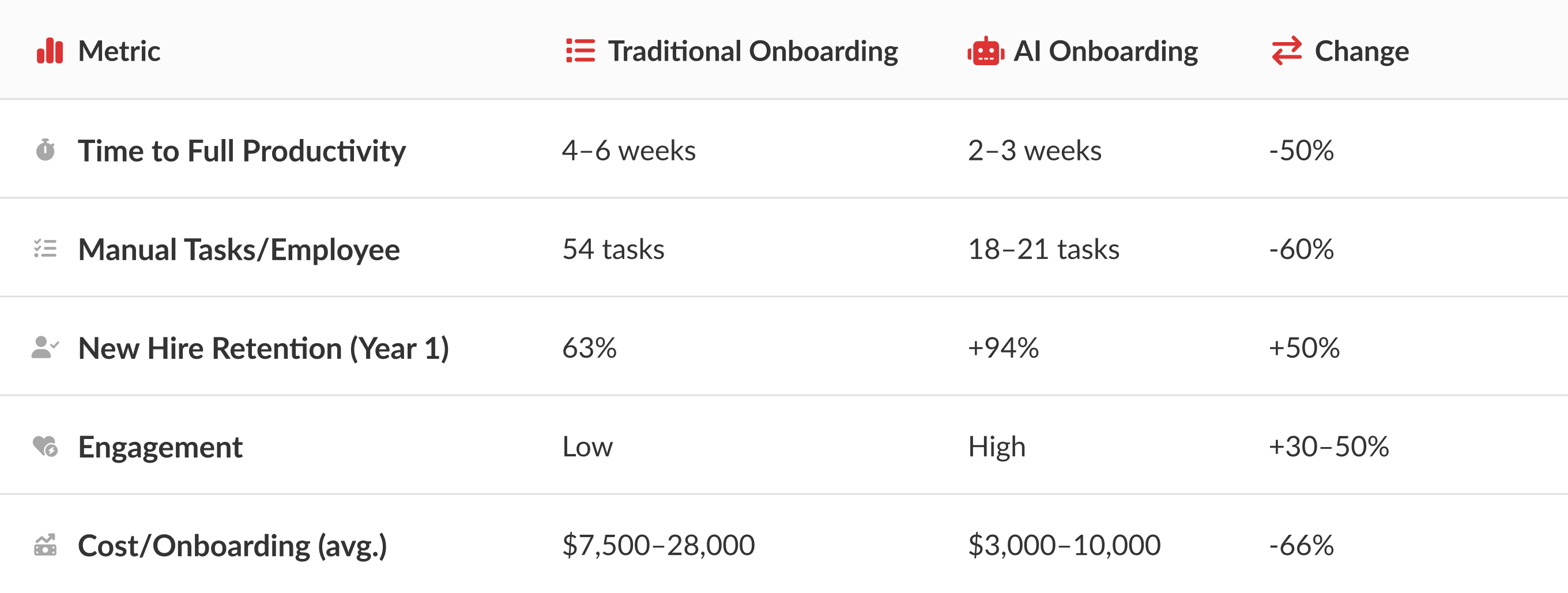A mountain of paperwork, confusing system logins, and a general feeling of being overwhelmed. This rough start could be a real driver of early employee churn, resulting in massive costs for companies.
Ready to throw the old onboarding playbook out the window? Good. Let’s unpack how onboarding automation with AI is rewriting the first-chapter scripts at companies that want to actually keep their talent and their sanity in the years to come. Hint: It’s way more than ticking off “send welcome email” from a dusty checklist.
Operating since 2005, Redwerk has delivered HR software development services and built effective customer onboarding flows for businesses across various industries. Drawing on our hands-on expertise and extensive research, we’ll provide you with the latest insights on onboarding process automation.
The State of Onboarding Automation Today
Let’s be real: nobody dreams about paperwork. But a fresh wave of AI onboarding flows has turned repetitive HR routines into a real business advantage. In 2025:
- 92% of HR pros already know about onboarding automation.
- A whopping 45% are actively piloting AI onboarding solutions.
- Companies that rolled out smart onboarding flows saw retention rates jump by 50%, and onboarding time drop by up to 60%.
Want the numbers? You got them:
Why Automated Onboarding Crushes Boring Old Checklists
Sure, the spreadsheet warriors might grumble. But trusted research and field data don’t lie. Here’s why onboarding automation wins hearts (and boardroom buy-in):
- Faster ramp-up. AI-powered toolkits shave onboarding time by up to 60%. Think about your last batch of hires. Now imagine them being productive weeks ahead of schedule.
- Cost killers. Polish and global case studies found cost savings exceeding about $70,000 per year in just one agency, thanks to automated forms, e-signatures, and digital training flows.
- High retention rates. Employees who enjoy smooth, digital-first onboarding are 10x more likely to stick around for the next three years.
This shift isn’t theoretical. Forbes, McKinsey, and European HR journals stress that structured onboarding programs boost productivity by up to 70% and satisfaction by 53%.
What’s Actually Working? (Hint: It’s Not Just Chatbots)
You’re not just automating for the sake of it. AI in onboarding blends instant support, real-time analytics, and nuanced personalization. Below are the features that separate serious digital HR from “fancy spreadsheet” territory. These are the standout AI onboarding innovations making waves:
- AI-powered document management: Automatic contract creation, e-signature flows, compliance checks.
- Personalized training modules: Learning paths adjust to each role, department, and even new hire speed. If a new hire completes all necessary tasks quickly and performs well on initial quizzes, the flow can be automatically accelerated, unlocking next-stage training or meeting requests earlier.
- Real-time engagement analytics: Managers get live dashboards on activation rates, problem steps, and feedback.
- AI chatbots: Always-on virtual assistants help with FAQs, tasks, and even workload nudges. Instead of relying on static keyword matching, these AI chatbots can interpret nuances in language.
- Pre-boarding workflows: Employees start training and system access before day one, boosting confidence and reducing first-week jitters.
- Sentiment analysis: Automated onboarding can help analyze the tone and sentiment of text responses during scheduled check-in prompts. If a new hire consistently expresses negative sentiment or shows unusually low engagement, the system flags them for personalized, human intervention.
One-Glance Comparison: Traditional vs. AI Onboarding
While onboarding automation takes care of routine tasks, let’s be honest, basic automation is static and impersonal. The next evolution is smart flows powered by AI. At Redwerk, we offer artificial intelligence development services to help you transform the onboarding process automation, create personalized journeys while preserving the essential, irreplaceable parts that must remain human.
Sometimes, a table just tells the story better:
Document Completion
Manual, spreadsheet-heavy
Instant, error-proof workflows
Training
Generic sessions
Role-personalized microlearning
HR Workload
Overwhelming
Light, strategic
Feedback
Sparse, subjective
Data-driven, immediate
Support Availability
Business hours
24/7 Chatbots
Cost per Employee
High
Drastically lower
Designing Onboarding Automation with AI
Moving from a simple checklist to a smart, automated onboarding system takes careful planning and advanced design. Tech companies developing recruitment apps and HR solutions need to understand the technical challenges involved. Our background in custom software development helps us guide this process.
Core Components of a Smart System
To support the adaptive onboarding flows with AI, several components must work in harmony:
- Custom Workflow Engine: This should be designed to manage complex decision paths, not just simple step-by-step processes. It should pause tasks, add new sub-tasks when AI detects something important, and then continue the main process smoothly.
- Centralized Data: AI works best when it has access to good data. To personalize onboarding, the system should bring together information from different sources like the ATS, HRIS, performance management, and learning systems. Having all this data in one place helps the AI make better predictions and recommendations.
- Machine Learning Integration: This means using models that can suggest training resources or spot early signs that someone might leave. These models need to learn from your company’s own data to give useful results. For example, at Redwerk, we used machine learning to build keyword recommendations in the Recruit Media app.
The Challenge of Integration Complexity
The biggest hurdle when you look to automate the onboarding process isn’t the AI itself—it’s ensuring seamless integration with existing enterprise software. Most companies rely on a patchwork of legacy systems that handle payroll, identity management, and access control.
The sophisticated software required for modern onboarding automation with AI must act as a master orchestrator, communicating via APIs with these legacy systems, normalizing the data, and triggering events reliably. The cost of poor AI integration results in unnecessary expenses and a suboptimal experience.
That’s why we go beyond setting up off-the-shelf tools. We build custom backend systems, workflow engines, and integration layers so your onboarding automation works smoothly. This lets you focus on your business while we take care of the technical details.
The Human Touch: Yes, You Still Need It
About now you’re wondering, “So, do we just let robots run the show?” Not even close.
All the data—from IBM to European HR journals—say the same: the most effective programs don’t ditch the human. They automate what’s slow and repetitive, so managers and HR teams can actually coach, nurture, and embed new colleagues in company culture.
- Managers matter: Onboarding is three times more effective when managers get involved early and often.
- Buddies beat bots: 56% of new hires who had an onboarding buddy felt more integrated and kept the momentum high.
- Personalization = Belonging: Automated processes that adjust content or pacing foster a sense of support and inclusion, not just efficiency.
Quick-Start Guide: How To Automate Onboarding Without Losing Your Soul
Let’s drop into a rapid-fire sequence—because you’re busy and bullet lists should never waste a minute:
- Audit your onboarding process for bottlenecks and paper-churners.
- Set clear goals: retention, time-to-productivity, employee satisfaction.
- Choose an AI solution that can handle both document flows and personalized training.
- Train HR staff, don’t replace them.
- Pilot-test on a small group, scale only when glitches are ironed out.
- Measure success. Focus on retention, productivity, AND feedback scores.
- Review for ethics and compliance at every step.
Takeways
Big changes come fast in onboarding these days. Automating the process with AI isn’t just for trend-chasers—it’s become critical for any team that wants results, not headaches. Companies using AI for onboarding are seeing productivity double, retention soar, and HR teams finally freed up to do, well, human stuff instead of chasing paperwork.
This isn’t just about speed. AI-powered onboarding flows ramp up new hires in days (not weeks), personalizing every step so an engineer in Berlin gets what they need, while sales in New York feel right at home. That’s smarter work, happier teams, and way fewer boring forms.
Don’t forget—AI isn’t here to kick HR out. It’s the ultimate sidekick, handling the grunt work so leaders connect, coach, and set culture. Smart onboarding means bots behind the scenes, managers up front, all supported by agile platforms that scale as business grows.
Ready for something bigger than just “faster paperwork”? Contact us today to see how our team can build custom, AI-powered workflows tailored specifically to your business, not someone else’s template.
See how we built an AI-powered recruitment app acquired by a US staffing giant





